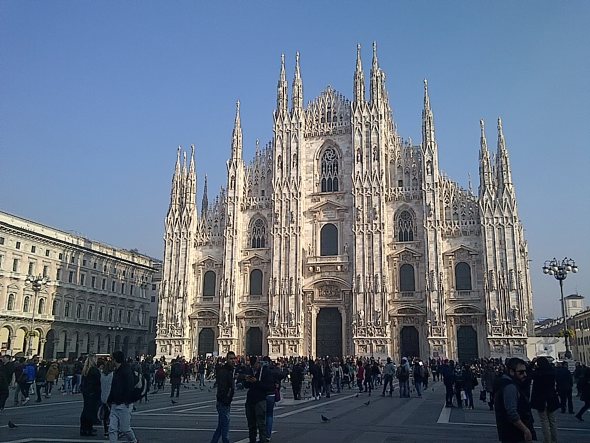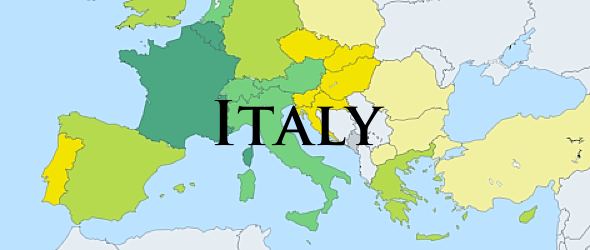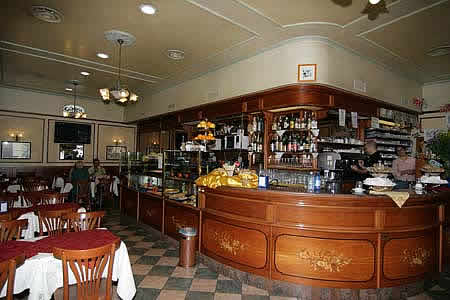Unveiling the Ancient Cave Dwellings of Matera
, also known as troglodyte settlements, are unique architectural structures carved directly into natural caves or rock formations. They have been used as homes by various cultures throughout history, offering shelter and protection.
, a city in southern Italy, is renowned for its remarkable cave dwellings that date back thousands of years. The history and origins of Matera’s cave dwellings tell a captivating tale of human habitation spanning several eras.
In the prehistoric era, Matera’s caves were inhabited by early humans, with evidence of settlements dating back to the Paleolithic period. The Roman period saw the continued use of these caves as homes, as well as the construction of more elaborate structures within the caves.
During the Middle Ages and Renaissance, Matera’s cave dwellings served as an important settlement, housing a growing population within its rocky cliffs.
Today, exploring the cave dwellings of Matera offers a fascinating journey into the past. The Sassi Caveoso and the are two distinct districts that comprise the majority of the city’s cave dwellings. These districts are characterized by narrow streets, winding alleys, and striking rock-cut architecture. The Church of Rupestrian Civilization, a cave church adorned with ancient frescoes, is a testament to the religious and cultural significance of these dwellings.
The preservation of Matera’s cave dwellings is of utmost importance. In recognition of their historical and cultural significance, the city was designated a UNESCO World Heritage Site in 1993. This status has allowed for the restoration and conservation of these unique structures, ensuring that future generations can marvel at their beauty.
What sets Matera’s cave dwellings apart is not only their architectural and design characteristics but also their cultural significance. These dwellings have been the subject of inspiration for artists and have made appearances in various films, further cementing their place in art and cinema.
For those planning to visit Matera, it is essential to consider the best time to visit, as the city experiences hot summers and mild winters. The top attractions in Matera include exploring the cave dwellings, visiting historic landmarks, and immersing oneself in the rich cultural heritage of the city. There are also various accommodation and dining options available to make your stay in Matera enjoyable and comfortable.
Unveiling the ancient cave dwellings of Matera is a journey that allows us to delve into the history, culture, and architectural marvels of this unique city. It is an experience that showcases the ingenuity and resilience of past civilizations while leaving a lasting impression on all who visit.
What are Ancient Cave Dwellings?
What are Ancient Cave Dwellings?
Ancient cave dwellings are remarkable structures that were either carved or constructed into natural rock formations. These unique dwellings have served as residences for various civilizations throughout history, providing them with both refuge and safeguard against the elements. Typically nestled within cliff faces or caves, these dwellings were skillfully crafted using rudimentary tools and techniques, such as chiseling and carving. One can still discover ancient cave dwellings in different corners of the world, like the rock-cut structures in Cappadocia, Turkey, or the Sassi di Matera in Italy. These dwellings serve as captivating gateways into the prosperous history and resourcefulness of early human settlements.
History and Origins of Matera’s Cave Dwellings
Unveiling the ancient cave dwellings of Matera takes us on a captivating journey into the history and origins of these unique structures. With sub-sections exploring the prehistoric era, the Roman period, and the Middle Ages and Renaissance, we will uncover fascinating insights into the evolution of Matera’s cave dwellings. Get ready to travel back in time and discover the rich heritage and cultural significance behind these remarkable architectural marvels.
The Prehistoric Era
The Prehistoric Era played a vital role in the development and formation of Matera’s cave dwellings. During this time, ancient humans sought refuge in natural caves for shelter and protection. Gradually, they started modifying these caves, enhancing the living spaces by constructing walls, roofs, and other structures. The Prehistoric Era marked the inception of human habitation in Matera’s caves, setting the stage for the distinctive architectural and cultural heritage that exists today. Understanding this era is indispensable in comprehending the historical significance and intricacy of Matera’s cave dwellings.
The Roman Period
In Matera was a significant time in the history of the city’s cave dwellings. During this period, Matera experienced a period of growth and development under Roman rule. The Romans recognized the strategic importance of Matera due to its location and natural resources. They constructed several important structures, including aqueducts and cisterns, to ensure a reliable water supply for the growing population. The Romans expanded the cave dwellings, creating larger and more intricate structures within the Sassi districts. These cave dwellings served as homes, businesses, and even places of worship. The Roman Period marked a period of prosperity and advancement for Matera’s cave dwellings, leaving a lasting architectural and historical legacy.
The Middle Ages and Renaissance
During the Middle Ages and Renaissance, Matera’s cave dwellings continued to be inhabited and evolved with changing architectural styles and cultural influences. In the Middle Ages and Renaissance, the caves were transformed into homes, churches, and even monasteries, showcasing intricate stone carvings and frescoes. The Renaissance period brought a further artistic flair to Matera, with grand palaces and noble residences being built. This era saw the blending of traditional cave dwellings with Renaissance architecture, creating a unique and fascinating cityscape. Today, visitors can explore these historic cave dwellings and admire the remarkable fusion of Middle Ages and Renaissance influences in Matera’s architecture and design.
Fun Fact: Matera’s cave dwellings played a significant role in the filming of Mel Gibson‘s “The Passion of the Christ,” capturing the authentic ambiance of the biblical setting.
Exploring the Cave Dwellings of Matera
Nestled within the enchanting city of Matera, lies a hidden treasure – the ancient cave dwellings. In this section, we embark on a captivating journey to explore these remarkable abodes. From the mysterious Sassi Caveoso to the intriguing Sassi Barisano, and the awe-inspiring Church of Rupestrian Civilization, each sub-section will unveil the unique charm and historical significance of Matera’s cave dwellings. So, grab your explorer’s hat and let’s dive into the fascinating world beneath the surface.
The Sassi Caveoso
Matera is one of the main districts of Matera’s ancient cave dwellings. It is characterized by steep narrow streets and winding alleys that lead to cave houses carved into the rock. The Sassi Caveoso offers a unique glimpse into the history and architecture of Matera, with its fascinating cave dwellings dating back thousands of years. Visitors can explore the cave houses, experience the local culture, and learn about the preservation efforts that have earned Matera UNESCO World Heritage status. A visit to the Sassi Caveoso is a must for anyone interested in immersing themselves in Matera’s rich history.
For an authentic experience, consider staying in a cave hotel and trying traditional local dishes at one of the charming restaurants scattered throughout the district. Immerse yourself in the unique atmosphere of the Sassi Caveoso and indulge in the rich history of Matera.
The Sassi Barisano
Sassi Barisano is one of the two main districts that comprise the ancient cave dwellings of Matera, Italy. Located on the eastern side of the city, it is known for its unique architecture and cultural significance. Key features of the Sassi Barisano include:
- Clusters of cave dwellings carved into the limestone cliffs.
- Narrow, winding streets and alleyways that create a maze-like atmosphere.
- Historic churches and buildings, such as the Church of San Giuseppe and the Piazza San Pietro Caveoso.
- Renovated cave houses that now serve as charming hotels, restaurants, and shops.
- The Sassi Barisano provides a glimpse into the rich history and heritage of Matera, attracting tourists from around the world.

Stop reading, start speaking
Stop translating in your head and start speaking Italian for real with the only audio course that prompt you to speak.
In addition to its architectural beauty, the Sassi Barisano has played a significant role in the city’s cultural development, inspiring artists, filmmakers, and writers with its captivating aura.
The Church of Rupestrian Civilization
The Church of Rupestrian Civilization is a significant site within Matera’s ancient cave dwellings. This unique church is carved into the rock, showcasing the architectural and artistic skills of its creators. It is adorned with frescoes and religious symbols, offering a glimpse into the spiritual and cultural life of the past. The Church of Rupestrian Civilization also holds historical and archaeological importance, reflecting the rich history and heritage of Matera. Visiting The Church of Rupestrian Civilization provides an opportunity to explore the religious traditions and artistic expressions of the people who once inhabited these caves.
Preservation and UNESCO World Heritage Status
Preservation and the UNESCO World Heritage Status are key elements in safeguarding the ancient cave dwellings of Matera. The recognition of this status highlights the exceptional universal value of the city’s cultural and historical significance. The efforts for preservation ensure that future generations can witness and appreciate the unique architecture and way of life found in the Sassi di Matera. The inclusion of Matera on the UNESCO World Heritage List attracts tourists from all over the world, ultimately boosting tourism and promoting sustainable development in the region. The ongoing efforts to preserve and maintain this extraordinary site are crucial in safeguarding our shared human heritage.
In France, the Maisons Troglodytes, also known as cave dwellings, are ancient habitations carved into the limestone cliffs. These dwellings date back thousands of years and served as homes and storage spaces for early human civilizations. Today, many of these caves have been preserved and can be visited as a testament to the ingenuity and adaptability of our ancestors. The preservation of these cave dwellings is vital in protecting our cultural heritage and ensuring that future generations can learn about and appreciate our shared history.
What Makes Matera’s Cave Dwellings Unique?
Unveiling the ancient cave dwellings of Matera, we are about to discover what sets these unique structures apart. From their awe-inspiring architecture and design to their deep cultural significance, Matera’s cave dwellings have left an indelible mark. Not only have they shaped the local art scene, but they have also made their way onto the big screen, influencing cinema across the globe. Join us as we embark on a journey to unravel the mysteries and wonders of Matera’s extraordinary cave dwellings.
The Architecture and Design
The architecture and design of Matera’s ancient cave dwellings are truly remarkable. The caves are typically carved out of limestone, creating a unique blend of natural and man-made elements. The structures are built into the side of the cliffs, with multiple levels and interconnected rooms. The design takes advantage of the natural curves and contours of the caves, resulting in a harmonious integration with the surrounding landscape. The use of stone and earth tones adds to the rustic charm of the dwellings. It’s interesting to note that the design also prioritizes functionality, with features like rock-cut stairs and ventilation shafts. A fascinating fact is that the architecture and design of these cave dwellings have influenced modern sustainable architecture practices, inspiring innovative solutions for energy efficiency and natural materials.
The Cultural Significance
The Cultural Significance of Matera’s cave dwellings is evident in various aspects of the city’s history and heritage.
| 1. Historical Importance | The cave dwellings reflect the enduring human presence in Matera since prehistoric times. |
| 2. Local Identity | These unique dwellings have become symbolic of Matera’s cultural identity and traditions. |
| 3. Inspiration for Art | The cave dwellings have inspired numerous artists, writers, and filmmakers, contributing to the city’s artistic legacy. |
| 4. Economic Revitalization | The preservation and promotion of the cave dwellings have revitalized Matera’s economy by attracting tourists and creating opportunities for local businesses. |
Fun Fact: Matera’s cave dwellings served as a backdrop for the filming of Mel Gibson’s movie “The Passion of the Christ.”
The Influence on Art and Cinema
The ancient cave dwellings of Matera have had a significant influence on art and cinema. The unique architecture and design of the caves have made them a captivating subject for artists and filmmakers. Many films have been shot in Matera, showcasing the influence on art and cinema, including Mel Gibson’s “The Passion of the Christ” and Pier Paolo Pasolini’s “The Gospel According to Matthew.” The caves have also inspired painters, photographers, and sculptors, who are drawn to their historical and cultural significance, further contributing to the influence on art and cinema. The art and cinema that have emerged from Matera’s cave dwellings serve as a powerful reminder of the rich history and enduring beauty of this remarkable UNESCO World Heritage site.
Visiting Matera: Travel Tips and Recommendations
Discover the enchantment of Matera’s ancient cave dwellings and prepare yourself for a remarkable journey. This section unravels the secrets of visiting Matera, offering valuable travel tips and expert recommendations. Learn about the best time to plan your visit, get ready to explore the top attractions that Matera has to offer, and discover amazing accommodation and dining options that will enhance your experience in this captivating city. Get ready for an unforgettable adventure in Matera!
Best Time to Visit
The best time to visit Matera, with its ancient cave dwellings, is during the spring and fall seasons, specifically from April to June and September to October. The weather during these months is pleasant and mild, perfect for exploring the outdoor attractions. The summer months can be quite hot, with temperatures reaching up to 40 degrees Celsius (104 degrees Fahrenheit). The winter season, particularly from November to February, can be cold and rainy, which may make it challenging to fully enjoy the experience. By visiting during the recommended seasons, you can maximize your enjoyment and avoid extreme weather conditions.
For a true story, Katie, a traveler, visited Matera in April and instantly fell in love with the charm of the cave dwellings. The mild weather allowed her to comfortably wander the narrow streets, admiring the unique architecture and soaking in the rich history. Katie particularly enjoyed exploring the Sassi Caveoso and was captivated by the peaceful atmosphere of the Church of Rupestrian Civilization. She savored delicious local cuisine at traditional restaurants and stayed in a cozy cave hotel, enhancing her immersive experience. Visiting during the best time to visit truly made Katie’s trip unforgettable.
Top Attractions in Matera
Matera offers a range of top attractions for visitors to explore. Some must-see sites include the stunning Sassi Caveoso, with its unique cave dwellings carved into the rock. The Sassi Barisano is another captivating area, featuring ancient cavern homes and narrow winding streets. The Church of Rupestrian Civilization showcases beautiful rock-cut churches filled with intricate frescoes. These top attractions highlight the rich architectural and cultural significance of Matera’s cave dwellings. To make the most of your visit, consider the best time to go and explore the diverse accommodation and dining options available in this enchanting city.
Accommodation and Dining Options
When visiting Matera, there are a variety of options available for accommodation and dining to enhance your experience. Here is a table summarizing all the accommodation and dining options:
| Accommodation | Dining Options |
|---|---|
| Luxury hotels | Fine dining restaurants |
| Boutique hotels | Traditional Italian trattorias |
| Bed and breakfasts | Local cafes and bistros |
| Guesthouses | Pizzerias and gelaterias |
| Apartments and rentals | Street food vendors |
For a truly authentic experience, you should consider staying in a cave hotel. These hotels offer restored cave dwellings where you can sleep. When it comes to dining, make sure not to miss the opportunity to try traditional regional dishes, like orecchiette pasta and local wines. With a wide range of options available, Matera caters to every traveler’s preferences and budget regarding accommodation and dining.
Frequently Asked Questions
What is Matera known for?
Matera is known for its ancient cave dwellings called the Sassi.
Where can travelers stay in Matera to experience the cave dwellings?
Travelers can stay in one of the cave hotels in Matera, such as Corte San Pietro.
What amenities are available in the cave hotels?
The cave hotels offer modern amenities such as Wi-Fi, elegant designer lighting, contemporary artworks, and more.
Who is the owner of Corte San Pietro?
Corte San Pietro is owned by Fernando Ponte.
What is the significance of Matera’s caves in history?
Matera’s caves were first occupied in the Paleolithic Age and have been expanded into living spaces throughout history.
What was the previous perception of Matera and its caves?
Matera and its caves were once known as “the shame of Italy” due to its poverty.
{
“@context”: “https://schema.org”,
“@type”: “FAQPage”,
“mainEntity”: [
{
“@type”: “Question”,
“name”: “What is Matera known for?”,
“acceptedAnswer”: {
“@type”: “Answer”,
“text”: “Matera is known for its ancient cave dwellings called the Sassi.”
}
},
{
“@type”: “Question”,
“name”: “Where can travelers stay in Matera to experience the cave dwellings?”,
“acceptedAnswer”: {
“@type”: “Answer”,
“text”: “Travelers can stay in one of the cave hotels in Matera, such as Corte San Pietro.”
}
},
{
“@type”: “Question”,
“name”: “What amenities are available in the cave hotels?”,
“acceptedAnswer”: {
“@type”: “Answer”,
“text”: “The cave hotels offer modern amenities such as Wi-Fi, elegant designer lighting, contemporary artworks, and more.”
}
},
{
“@type”: “Question”,
“name”: “Who is the owner of Corte San Pietro?”,
“acceptedAnswer”: {
“@type”: “Answer”,
“text”: “Corte San Pietro is owned by Fernando Ponte.”
}
},
{
“@type”: “Question”,
“name”: “What is the significance of Matera’s caves in history?”,
“acceptedAnswer”: {
“@type”: “Answer”,
“text”: “Matera’s caves were first occupied in the Paleolithic Age and have been expanded into living spaces throughout history.”
}
},
{
“@type”: “Question”,
“name”: “What was the previous perception of Matera and its caves?”,
“acceptedAnswer”: {
“@type”: “Answer”,
“text”: “Matera and its caves were once known as ‘the shame of Italy’ due to its poverty.”
}
}
]
}




